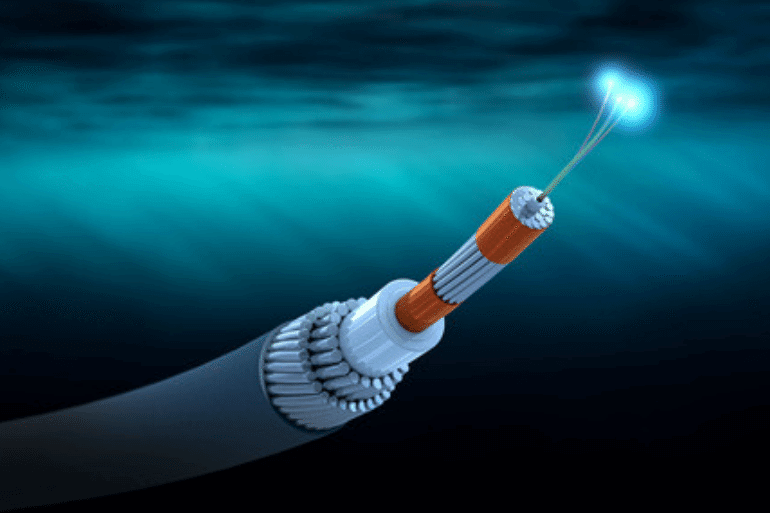Twenty thousand cables under the sea: A brief history of submarine cable communications

The world takes internet communication for granted today, not giving much attention to the backbone driving this phenomenon. In fact, not many people know that 97% of global communications is carried by submarine cables in the sea and not through satellites as popularly believed. Dino Cano presents this interesting story.
On August 16th, 1858 international communications changed forever when Queen Victoria sent a short message in the form of a telegram to the then US president James Buchanan. The message travelled through 2,500 kilometres of newly laid submarine cable and took 16 hours to arrive. But it worked and was a massive improvement on the alternative 10-day duration it would have taken to cross the Atlantic by sea.
A month earlier the British ship Agamemnon and the American ship Niagara, had met in mid-Atlantic, spliced their cables and began to lay it out as they steamed back towards their respective countries. After several failed attempts, Agamemnon arrived in Ireland and Niagara in Newfoundland.
It was an expensive endeavour privately financed by a number of forward thinking entrepreneurs who believed they could succeed where others had failed. Amongst them the Scottish submarine cable pioneer John Pender, who gambled his fortune on cracking the logistical and technical challenges presented by laying a cable across two continents.
There were immediate commercial benefits and it did not take long for the business to grow and transform from novelty to necessity. So much so that the following year a ship was sent out with a large hook to retrieve the broken end of a previous attempt and somehow succeeded to grapple one end and splice it to a new cable, completing the network connection and so doubling his capacity in just a few months.
Of course, the cable companies needed their return, so they got together to agree on international tariffs. There were no social interests built into the plan and the exorbitantly high tariffs created an elite space for high-end trade. In 1866, it cost £20 to send a 20-word telegram – a third of the annual salary of a fisherman in Newfoundland where the Atlantic Cable landed. So, no incentive to share stories about the one that got away!
Almost 50 years later, little had changed. Henniker Heaton, a British Member of Parliament, would have approved of our present day all you can eat voice and data packages as telegrams remained out of reach for most people. Heaton’s campaign, over a 100 years ago, for removal of obstacles to communications between different parts of the world believing it would lead to better feeling between nations, struck a similar chord to the early promoters of the internet. Having lived in Australia, he campaigned for penny post systems for telegraphs at a time when the cable rate for one word still ranged from 1 to 6 days’ salary of a farm worker. A lot of lolly for a simple lol!
Though virtually unknown now, at the time of his death, in 1896, Sir john Pender controlled companies owning one third of the cables in the world; cables which would form the base of the networks that years later developed into the World Wide Web, and leveraging the sort of control over communications held by the likes of Mark Zuckerberg now.
Submarine cables remain a big market and typically are owned by multiple companies, many of them telecom operators in strategic locations like Gibtelecom. As partners in the Europe-India Gateway, a 15,000 km submarine cable from London to India, landing in Gibraltar and connecting Europe, Africa and Asia they serve the local as well as international markets. It’s not a new business though. The first submarine telegraph cable started its operation in Gibraltar in 1870. The company that laid the first part of the cable took the name of Falmouth, Gibraltar and Malta Telegraph Company and eventually became Cable & Wireless.
Though it may come as a surprise to many people, most of our internet communication still involves submarine cables today. Even though there are thousands of satellites now orbiting the earth, it’s still necessary to run very long cables along ocean floors. New technology has in this case not overtaken the old. In fact, as little as 3% of global communications are carried via satellite, which means 97% of the world's communications are transported around the world via fibre optic submarine cables. The discussions and debates over bandwidth and tariffs are older than one imagines, and the need for accurate wholesale billing is more important now than ever.
Anyone old enough to have watched TV in the 80s would have heard the “and now … transmitted by Satellite!” announcements from proud channels presenting cross-Atlantic events. The problem is that satellite transmissions suffer from latency and loss whilst optical fibre can transmit at 99.7% of the speed of light. The only people watching Netflix via satellite are researchers in Antarctica. But don’t tell anyone!
So, all those people out there, looking up Wikipedia, uploading their fitness stats, or navigating with online maps, receiving a mail or calling someone abroad, it is very likely that you have unknowingly used a submarine communications cable many leagues under the sea.

